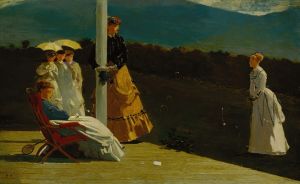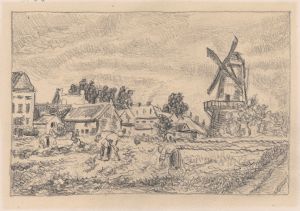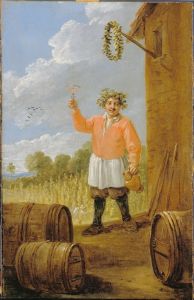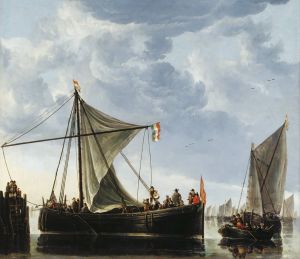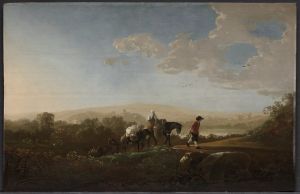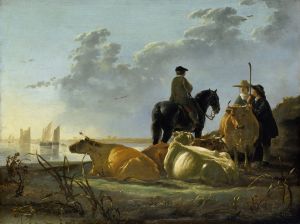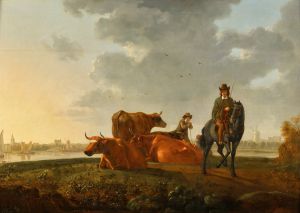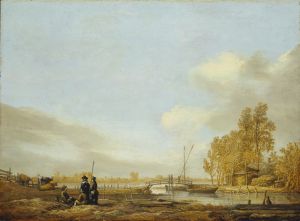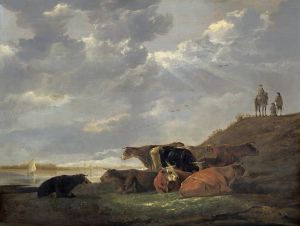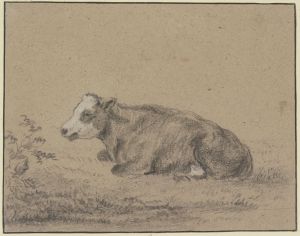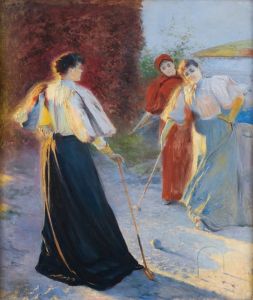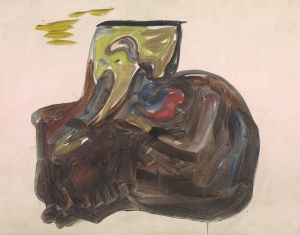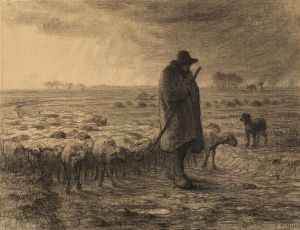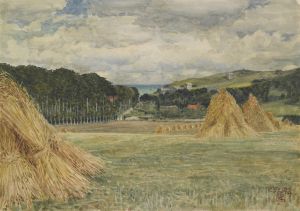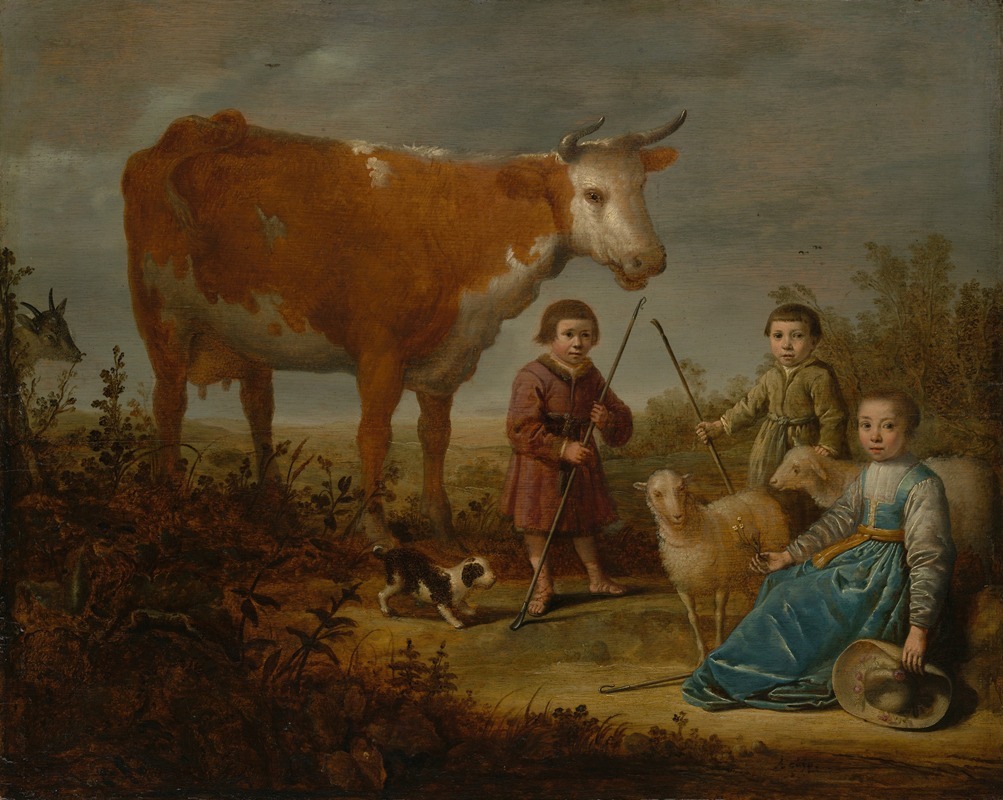
Children and a Cow
A hand-painted replica of Aelbert Cuyp’s masterpiece Children and a Cow, meticulously crafted by professional artists to capture the true essence of the original. Each piece is created with museum-quality canvas and rare mineral pigments, carefully painted by experienced artists with delicate brushstrokes and rich, layered colors to perfectly recreate the texture of the original artwork. Unlike machine-printed reproductions, this hand-painted version brings the painting to life, infused with the artist’s emotions and skill in every stroke. Whether for personal collection or home decoration, it instantly elevates the artistic atmosphere of any space.
"Children and a Cow" is a painting by the Dutch artist Aelbert Cuyp, a prominent figure of the Dutch Golden Age of painting. Cuyp, born in 1620 in Dordrecht, was known for his landscapes, often bathed in the warm glow of the early morning or late afternoon light. His works frequently feature pastoral scenes, combining elements of landscape and genre painting, which was a popular theme during the 17th century in the Netherlands.
The painting "Children and a Cow" exemplifies Cuyp's skill in capturing the serene beauty of rural life. Although specific details about the painting's creation, such as the exact year it was painted, are not well-documented, it is generally believed to have been created during the mid-17th century, a period when Cuyp was most active and produced some of his most acclaimed works.
In "Children and a Cow," Cuyp presents a tranquil rural scene, typical of his oeuvre. The painting depicts a group of children interacting with a cow in a pastoral setting. This composition reflects Cuyp's interest in the harmony between humans and nature, a recurring theme in his work. The children are portrayed in a naturalistic manner, engaging with the cow in a way that suggests a peaceful coexistence. The cow, a common motif in Cuyp's paintings, symbolizes the agrarian lifestyle that was central to Dutch society at the time.
Cuyp's use of light is particularly noteworthy in this painting. He employs a warm, golden light that suffuses the scene, creating a sense of calm and timelessness. This mastery of light is one of Cuyp's signature techniques, often drawing comparisons to the Italianate style, which was characterized by a similar use of light and atmosphere. Cuyp's ability to capture the subtleties of light and shadow adds depth and dimension to the painting, enhancing its overall realism and appeal.
The landscape in "Children and a Cow" is rendered with meticulous attention to detail, showcasing Cuyp's skill in depicting the natural environment. The rolling hills, lush greenery, and expansive sky serve as a backdrop to the central figures, creating a sense of space and openness. This emphasis on the landscape reflects the influence of other Dutch landscape painters of the time, as well as Cuyp's own observations of the countryside around Dordrecht.
Aelbert Cuyp's paintings, including "Children and a Cow," were highly regarded during his lifetime and continue to be appreciated for their artistic merit and historical significance. His work provides valuable insight into the rural life of the Dutch Golden Age, capturing the essence of a society that was closely connected to the land. Today, Cuyp's paintings are held in various collections around the world, admired for their beauty, technical skill, and the serene vision they present of 17th-century Dutch life.
While specific details about the provenance and current location of "Children and a Cow" may not be readily available, the painting remains an important example of Cuyp's contribution to Dutch art. His ability to blend landscape and genre elements into harmonious compositions has earned him a lasting place in the history of art, and "Children and a Cow" is a testament to his enduring legacy.





